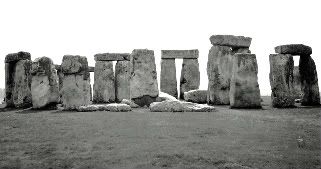
The Mysteries of Stonehenge
Much has been written about the reasons why the prehistoric monument of Stonehenge, in Wiltshire, southern England, was built. Perhaps this enigmatic ancient structure has been designed for the temple of the ancestors, the astronomical calendar, a healing center or a giant computer? May also worked all these things at different times during the 1500 years of history? As our ancient ancestors built a large monument has attracted great attention over the years. In fact, some experiments were conducted in carefully arranged Stonehenge to find out exactly how the Welsh blue stones and the stones were transported to local sarsen Salisbury Plain and what method is used to prevent when they arrived.
All this is fascinating enough, but Stonehenge still maintains its less explored, darker aspects, not least of which are the enigmatic burials scattered in and around this famous Neolithic monument. What can these burials, both cremation and inhumation, tell us about the rituals and activities that went on at Stonehenge more than four millennia ago?
What modern visitors see when they visit Stonehenge is a circular setting of large standing stones surrounded by earthworks, the remains of the last in a series of monuments constructed on the site between c3100BC and c1600BC. During its 1500-year history, Stonehenge was built in three broad construction phases, though there were numerous sub-phases in between, and there is evidence for human activity on the site both before and after these dates.
The first monument on the site, began around 3100 BC, was a circular ‘henge’ earthwork about 360 feet (110 metres) in diameter, a ‘henge’ in the archaeological sense being a circular or oval-shaped flat area enclosed by a boundary earthwork. This structure probably contained a ring of 56 wooden posts (or possibly an early bluestone circle), the pits for which are named Aubrey Holes (after the 17th century local antiquarian John Aubrey). Later, around 3000BC (the beginning of Stonehenge Phase II), some kind of timber structure seems to have been built within the enclosure, and Stonehenge functioned as a cremation cemetery, the earliest and largest so far discovered in Britain.
The Cremation Cemetery
During the 20th century nearly 60 cremation burials were uncovered at Stonehenge, with perhaps a couple of hundred more remaining in unexcavated areas of the monument. Interestingly, the latest of these cremations has been radiocarbon dated to c2300 BC, which illustrates that cremation was still being practiced at Stonehenge long after the bluestones and sarsens had been erected.
Another interesting and unusual aspect of the cremated remains discovered at Stonehenge is that the majority of them are from adult males, most within the 25 to 40-year age group. The conclusion can only be that only certain people were selected for burial within this early Stonehenge monument. These men would have been politically important, perhaps aristocrats and / or clan leaders and were probably authority figures at the site during the first half of the third millennium BC.
Most of the remaining (inhumation) burials in the area of the monument are roughly contemporary with each other, dating from the 2400 – 2150BC (the Early Bronze Age period), although there is only one complete skeleton from amongst them. Examination of this intact skeleton, which was found in 1978 buried in the outer ditch of the monument, revealed that the man had been shot at close range by up to six flint-tipped arrows, probably by two people, one shooting from the left the other from the right. Could this have been an execution or perhaps even some form of ritual human sacrifice?
http://brian-haughton.com/articles/the-stonehenge-burials/
Read More Other Unsolved Mysteries article!


